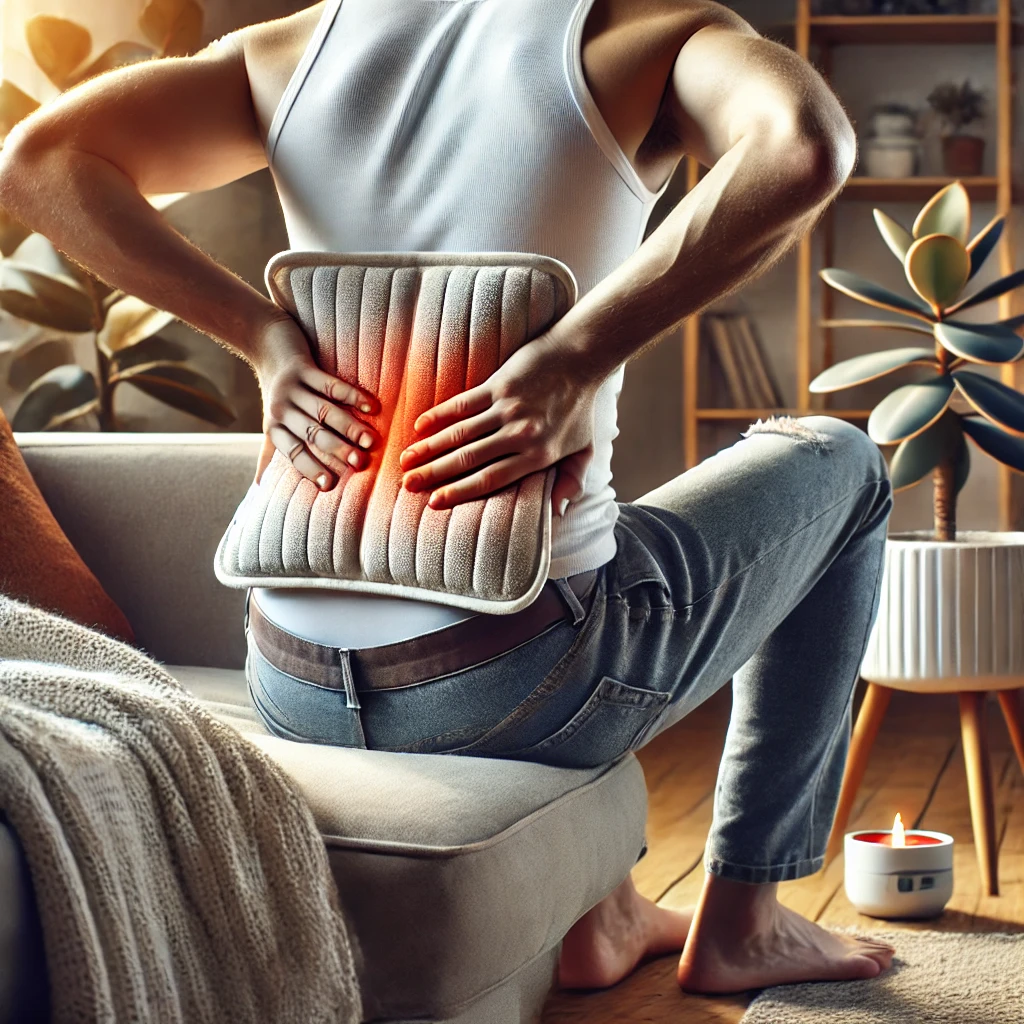Introduction
Chronic pain can significantly affect daily life, impacting physical health, emotional well-being, and overall quality of life. While medications can offer relief, many individuals seek natural methods to manage pain effectively and improve their long-term well-being. Embracing holistic and natural approaches can provide sustainable results, reduce dependency on medications, and empower individuals to take control of their health.
This guide explores effective natural strategies for managing chronic pain, focusing on gentle, accessible, and sustainable methods that nurture the body and mind.

Understanding Chronic Pain
Chronic pain is defined as pain that persists for more than three months, often continuing even after the initial injury has healed. It can stem from conditions such as arthritis, fibromyalgia, nerve damage, or back problems. Managing chronic pain involves addressing both physical discomfort and the emotional strain that comes with it.
Benefits of Natural Pain Management
- ✅ Reduces Dependency on Medications: Minimizes potential side effects and long-term health risks.
- ✅ Supports Overall Wellness: Encourages healthy lifestyle habits that benefit the entire body.
- ✅ Empowers Self-Care: Promotes proactive and mindful health management.
- ✅ Encourages Emotional Balance: Natural methods often integrate mental well-being practices, reducing stress and anxiety.
1. Mind-Body Techniques – Connecting Mental and Physical Health
Mind-body practices help reduce stress, promote relaxation, and decrease the perception of pain by calming the nervous system.
🧘 Effective Mind-Body Techniques:
- Meditation: Focus on breathwork to center the mind and reduce stress.
- Yoga: Incorporate gentle poses that improve flexibility and reduce muscle tension.
- Tai Chi: Engage in slow, flowing movements that promote balance and relaxation.
💡 Tip: Start with 10-15 minutes daily and gradually increase duration as you feel comfortable.
2. Heat and Cold Therapy – Simple Yet Effective
Applying heat or cold to affected areas can provide immediate relief by reducing inflammation and easing muscle stiffness.
🔥 How to Use:
- Heat Therapy: Use heating pads or warm baths to relax tight muscles.
- Cold Therapy: Apply cold packs to reduce inflammation and numb sharp pain.
💡 Tip: Alternate between heat and cold therapy to target different pain types effectively.
3. Regular Physical Activity – Movement for Pain Relief
Gentle, regular movement helps maintain flexibility, strengthens muscles, and reduces pain over time.
🚶 Recommended Activities:
- Walking or light jogging for cardiovascular health.
- Swimming for full-body, low-impact exercise.
- Stretching routines to maintain muscle elasticity.
💡 Tip: Start slow and focus on consistency. Even 10-15 minutes of movement daily can make a significant difference.
4. Acupuncture – Balancing Energy and Relieving Pain
Acupuncture, a traditional Chinese medicine practice, involves inserting thin needles into specific points on the body to promote energy flow and reduce pain.
🌿 Benefits of Acupuncture:
- Stimulates natural pain-relieving chemicals in the body.
- Reduces inflammation and improves circulation.
- Enhances overall relaxation and stress relief.
💡 Tip: Consult a licensed acupuncturist for personalized treatment plans.
5. Herbal Remedies – Nature’s Pain Relievers
Certain herbs possess natural anti-inflammatory and pain-relieving properties that can complement other pain management strategies.
🌱 Common Herbal Options:
- Turmeric: Contains curcumin, known for reducing inflammation.
- Ginger: Helps with muscle soreness and joint pain.
- Willow Bark: Traditionally used for pain relief, especially for headaches and back pain.
💡 Tip: Always consult with a healthcare provider before starting herbal supplements to ensure safety and proper dosage.
6. Massage Therapy – Releasing Tension and Improving Circulation
Massage therapy alleviates muscle stiffness, improves blood flow, and promotes relaxation, making it an effective method for reducing chronic pain.
💆 Types of Massage for Pain Relief:
- Swedish massage for gentle relaxation.
- Deep tissue massage for chronic muscle tension.
- Trigger point therapy to target specific pain points.
💡 Tip: Regular massages can help maintain long-term muscle flexibility and pain relief.
7. Dietary Changes – Supporting Healing from Within
An anti-inflammatory diet can significantly reduce pain levels by decreasing inflammation in the body.
🥗 Dietary Tips for Pain Management:
- Increase intake of fruits, vegetables, and whole grains.
- Include healthy fats like omega-3s from fish and nuts.
- Reduce processed foods, sugar, and refined carbohydrates.
💡 Tip: Staying hydrated is also crucial for reducing inflammation and supporting overall health.
8. Essential Oils – Natural Aromatherapy for Pain Relief
Aromatherapy using essential oils can offer soothing effects for both physical pain and emotional stress.
🌸 Popular Essential Oils for Pain Relief:
- Lavender: Reduces muscle tension and promotes relaxation.
- Peppermint: Offers a cooling sensation that helps alleviate headaches.
- Eucalyptus: Relieves joint and muscle pain.
💡 Tip: Use essential oils in diffusers, baths, or diluted with carrier oils for massage.
9. Sleep Hygiene – Restorative Sleep for Pain Management
Quality sleep is essential for the body’s healing process. Poor sleep can worsen pain, while good sleep promotes recovery and resilience.
🛌 Improving Sleep Naturally:
- Maintain a consistent sleep schedule.
- Create a calming bedtime routine.
- Avoid stimulants like caffeine before bed.
💡 Tip: Try gentle stretches or meditation before bed to promote relaxation and better sleep.
10. Stress Management – Reducing Pain Through Calmness
Chronic stress can intensify the perception of pain. Managing stress is essential for reducing overall discomfort and promoting mental health.
💆 Effective Stress-Relief Techniques:
- Journaling to release emotional tension.
- Deep breathing exercises for immediate calm.
- Spending time in nature to promote relaxation.
💡 Tip: Dedicate a few minutes daily to mindfulness practices for ongoing stress management.

Conclusion
Managing chronic pain naturally involves adopting a holistic approach that nurtures both the body and mind. By incorporating gentle movement, mindful practices, and dietary changes, it’s possible to reduce pain and improve overall quality of life. These natural methods promote long-term well-being, offering sustainable solutions without heavy reliance on medication.
Start with small, consistent steps and find the practices that best align with your lifestyle. Over time, these habits can transform the experience of pain into one of empowerment and strength.





